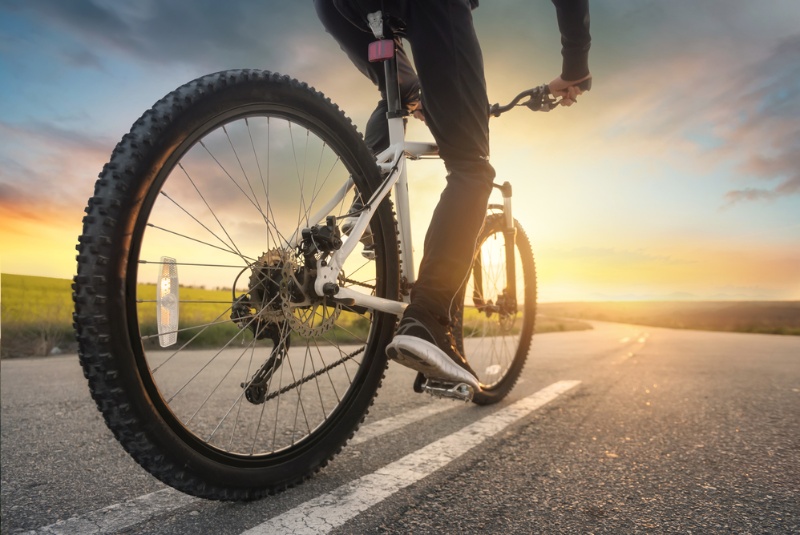Cycling is more than just a means of transportation; it's a lifestyle, a form of exercise, and a way to connect with the great outdoors. Whether you're a seasoned cyclist or a beginner, choosing the right bicycle is crucial to ensure a comfortable and enjoyable riding experience. In this article, we'll guide you through the process of making a smart purchase on your next bicycle. By considering various factors such as your riding style, budget, and personal preferences, you can find the perfect ride that suits your needs.
Determine Your Riding Style
The first step in making a smart bicycle purchase is to determine your riding style. Are you planning to ride primarily on smooth city streets, tackle rugged mountain trails, or explore long-distance routes? Different types of bicycles are designed for specific purposes, so understanding your riding style is crucial.
a. Road Bikes: If you're interested in fast-paced rides on smooth roads and value efficiency, a road bike is an excellent choice. These lightweight bicycles are built for speed and agility, making them ideal for commuting and long-distance rides.
b. Mountain Bikes: For off-road adventures and rough terrain, mountain bikes are your go-to option. They come equipped with sturdy frames, wide tires, and suspension systems to handle challenging trails.
c. Hybrid Bikes: Hybrid bicycles are versatile, making them suitable for a mix of road and trail riding. They offer a comfortable upright riding position and are perfect for commuting or casual cycling.
d. Cruiser Bikes: If you prefer a leisurely ride along the beach or through the neighborhood, cruiser bikes are designed for comfort and style. They often feature wide, padded seats and handlebars for a relaxed riding experience.
e. Touring Bikes: Touring bikes are built for long-distance journeys and are equipped with racks and panniers for carrying gear. They offer a stable and comfortable ride, making them an excellent choice for bike touring.
Set a Realistic Budget
Once you've determined your riding style, it's time to set a budget. Bicycles come in a wide range of prices, from budget-friendly options to high-end models. It's important to establish a realistic budget that takes into account not only the cost of the bike but also any additional accessories or gear you may need, such as helmets, lights, locks, and maintenance tools.
While it may be tempting to splurge on a top-of-the-line bicycle, remember that there are excellent options available at various price points. Consider what features are essential for your riding style and prioritize them in your budget. It's also a good idea to factor in ongoing maintenance costs to keep your bike in tip-top condition.
Test Ride Multiple Bicycles
Before making a final decision, it's crucial to test ride multiple bicycles. This hands-on experience allows you to get a feel for the bike's comfort, handling, and fit. When test riding, pay attention to the following factors:
a. Fit: Ensure that the bike's size and frame geometry match your body's proportions. A properly fitted bike will provide better control and reduce the risk of discomfort or injury.
b. Comfort: Assess the comfort of the saddle, handlebars, and overall riding position. Your comfort during long rides is essential for a positive cycling experience.
c. Handling: Test the bike's responsiveness and handling on different surfaces, such as pavement and gravel. Make sure it feels stable and easy to maneuver.
d. Gears and Brakes: Shift through the gears and test the brakes to ensure they are smooth and reliable. Different types of bikes may have varying gear systems and brake types, so choose the one that suits your needs.
e. Frame Material: Pay attention to the frame material, whether it's aluminum, carbon fiber, steel, or titanium. Each material has its unique characteristics, such as weight, durability, and ride quality.
Research Brands and Models
Before making a final decision, conduct thorough research on various bicycle brands and models. Reading reviews, seeking recommendations from experienced cyclists, and visiting local bike shops can provide valuable insights into the quality and reputation of different options. Consider factors such as warranty, customer support, and availability of replacement parts when evaluating brands.

Consider Additional Accessories
In addition to the bicycle itself, you may need various accessories to enhance your cycling experience and ensure safety. Some essential accessories to consider include:
a. Helmet: A well-fitting helmet is a must for safety. Look for one that meets safety standards and provides adequate ventilation and comfort.
b. Lights: Front and rear lights are essential for visibility, especially if you plan to ride in low-light conditions or at night.
c. Lock: Invest in a sturdy lock to secure your bicycle when you're not riding it. Choose one that matches your security needs and the areas where you'll be parking your bike.
d. Pump and Repair Kit: Carry a portable pump and a basic repair kit with tools and spare tubes to handle minor maintenance and flat tire repairs on the go.
e. Fenders and Racks: Depending on your needs, consider adding fenders to protect yourself from splashes and racks to carry cargo or panniers for longer rides.
Negotiate and Compare Prices
Once you've identified the bicycle that best suits your needs, it's time to negotiate the price. Don't be afraid to haggle with the seller, especially if you've done your research and found comparable prices elsewhere. Many bike shops are willing to offer discounts or throw in accessories as part of the deal.
Additionally, compare prices across different retailers, both online and local bike shops. Keep in mind that local bike shops often provide valuable services such as expert advice, test rides, and maintenance, which can be worth paying a slightly higher price for.
Check for Maintenance and Warranty
Before finalizing your purchase, inquire about the manufacturer's warranty and the bike shop's maintenance services. A good warranty can provide peace of mind in case of manufacturing defects, while a bike shop that offers maintenance and repairs can be a valuable resource for keeping your bike in excellent condition.
Think About Long-Term Costs
As you make your smart bicycle purchase, consider the long-term costs associated with owning a bike. This includes regular maintenance, replacement parts, and any upgrades or accessories you may want to add over time. Maintaining your bike properly will extend its lifespan and ensure it continues to perform well.
Making a smart purchase on your next bicycle involves a combination of thoughtful consideration, research, and practical testing. By determining your riding style, setting a realistic budget, test riding multiple bicycles, researching brands and models, and considering additional accessories, you can find the perfect bicycle that suits your needs and preferences. Remember that the right bike will not only provide you with enjoyable rides but also contribute to your overall health and well-being as you explore the world on two wheels.




